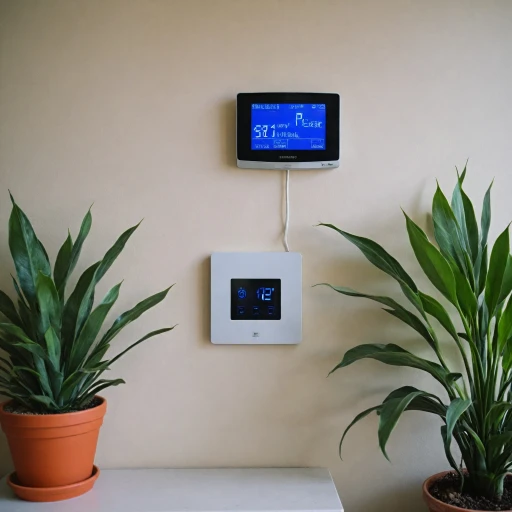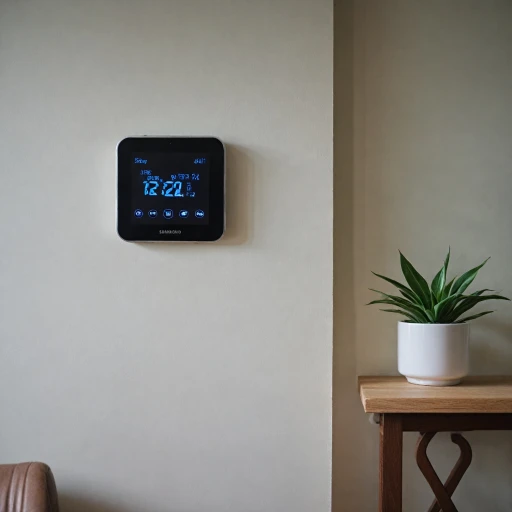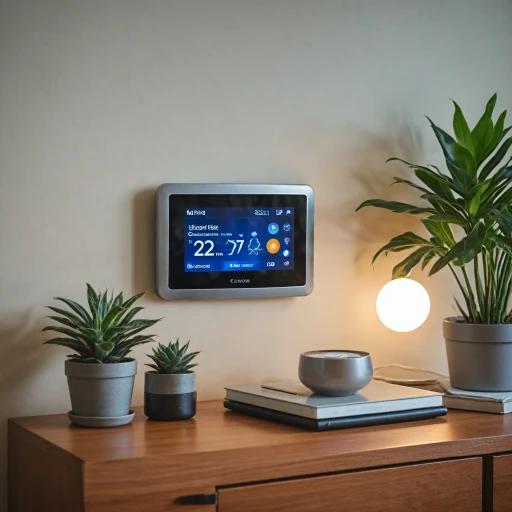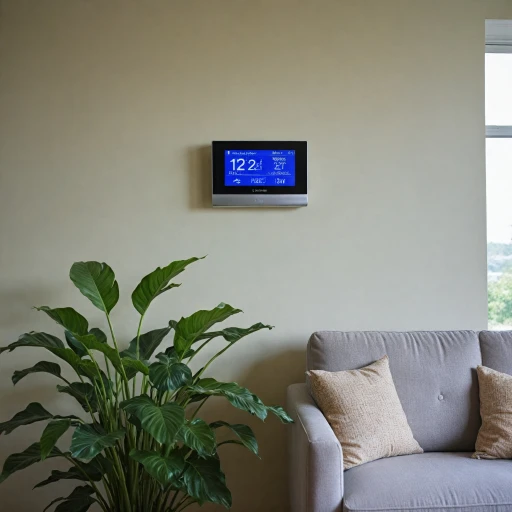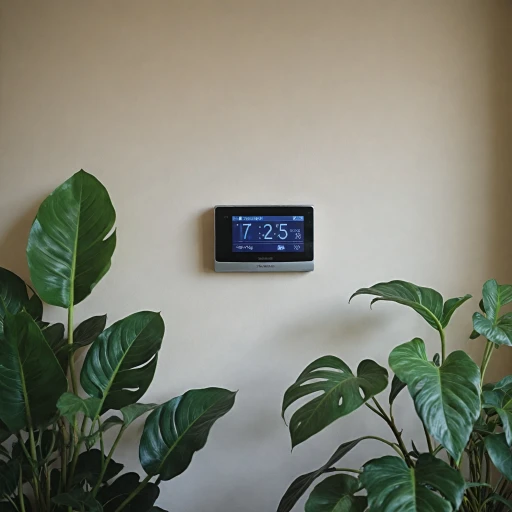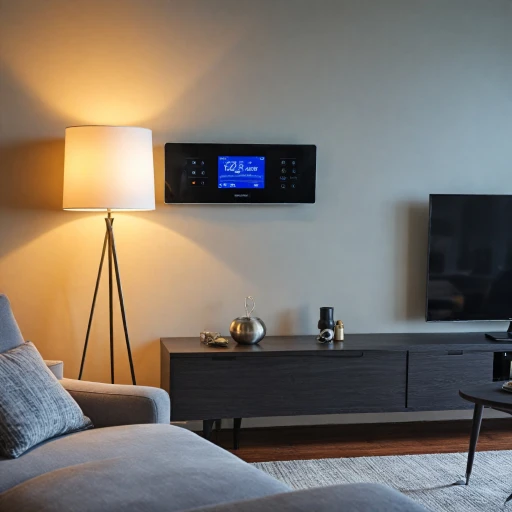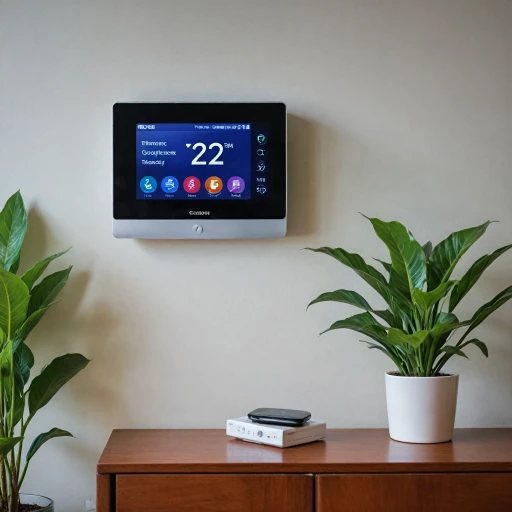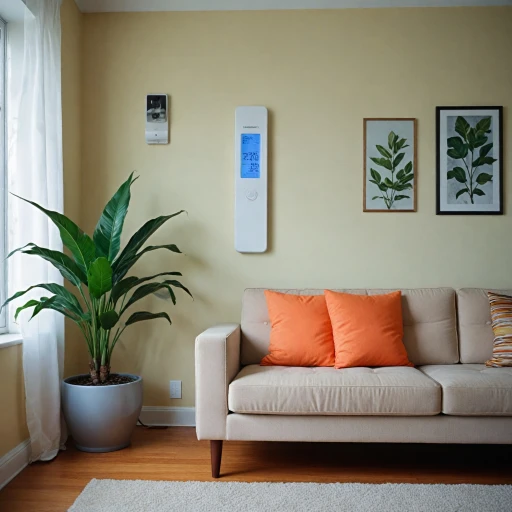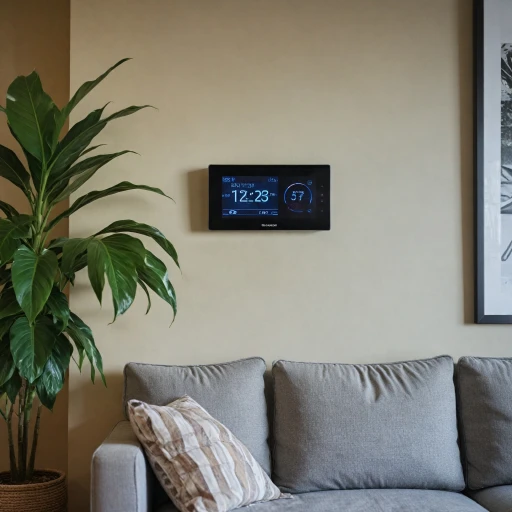
Understanding Wireless Thermostats
{What Makes Wireless Thermostats So Convenient?
Wireless thermostats are becoming a popular home upgrade, and it's not hard to see why. These devices offer advanced temperature control with unmatched convenience and flexibility.Unlike traditional thermostats, wireless variants allow you to manage your system remotely, often from a smartphone, tablet, or smart assistant device like Alexa. This capability provides enhanced comfort and efficiency without the need to be physically present at home.
Some of the most popular models in the market today include the ecobee smart thermostat and Google Nest. These devices provide stellar connectivity through Wi-Fi, enabling real-time adjustments and monitoring. Many of these products, including those from Honeywell, boast Energy Star certification, meaning they meet specific efficiency standards that could potentially lower your energy bills.
Furthermore, with emerging technologies like voice control through Amazon Echo or Google Assistant, controlling your home's temperature has never been easier. Whether it’s adjusting the heating on a cold winter night or prepping your coolers during a hot summer day, these devices provide seamless integration into your daily routine.
The advanced programmability of these thermostats also plays a vital role. Programmable thermostats learn your schedule over time to optimize the heating and cooling of your home. Some models, like the ecobee smart thermostat or Nest, excel in creating a climate that provides comfort when you're at home and saves energy when you're away.
As you explore the possibilities of temperature automation, it’s crucial to consider how these systems mesh with your existing setup. Make sure to check compatibility with your heating and cooling systems to maximize efficiency and functionality. These points will be further elaborated as you delve into installation considerations, ensuring you select a model that fits effortlessly into your living space.
Key Features of Wireless Thermostats
Essential Characteristics to Look for in a Smart Thermostat
When diving into the world of smart thermostats, it's crucial to understand the features that set them apart from traditional models. While smart thermostats like the Nest and Ecobee have become synonymous with innovation, there are core attributes shared across various brands.- Programmable and Flexible Control
- Smart thermostats offer programmable features, allowing users to set temperature schedules based on their routines. This ensures optimal energy usage by automatically adjusting heating and cooling settings when you're asleep or away.
- Compatibility with devices like Amazon Alexa or Google Nest enhances convenience, providing voice control to adjust settings without lifting a finger.
- Wireless Connectivity
- A wireless thermostat connects seamlessly to your home's Wi-Fi, enabling remote access via smartphone apps or web platforms. This feature allows for real-time adjustments no matter where you are, contributing to potential energy savings.
- Integration with Existing Systems
- Compatibility with various HVAC systems is a pivotal consideration. Smart thermostats, such as those from Honeywell or Ecobee, typically work with a wide range of heating and cooling configurations.
- Compatibility doesn't just end with heating systems. Some models integrate with smart home ecosystems, allowing interaction with lights, alarms, and more.
- Intelligent Energy Management
- Many smart thermostats are Energy Star certified, a testament to their energy efficiency. Features like geofencing use your smartphone's location to adjust settings when you leave or approach home, optimizing energy usage and costs.
- Energy providers may offer incentives or rebates for incorporating a smart thermostat into your home, making these advanced devices an economically wise choice.
- Monitoring and Learning Abilities
- Advanced models incorporate learning capabilities, adjusting settings based on your habits and preferences, which can enhance comfort and reduce energy use over time.
- Integrated air quality monitors provide insights into your indoor environment, helping you maintain a healthy and comfortable home.
Energy Efficiency and Cost Savings
Maximize Savings and Efficiency with Wireless Thermostats
Wireless smart thermostats offer significant advantages in terms of energy efficiency and cost savings, making them a worthwhile investment for any homeowner. Here's why investing in a wireless thermostat can be beneficial for optimizing your energy usage:- Improved Energy Management: Smart thermostats like Ecobee and Google Nest are designed with advanced algorithms that learn your home's heating and cooling patterns. They automatically adjust the temperature based on your daily routines, reducing unnecessary energy consumption.
- Programmable Features: Many wireless thermostats come equipped with programmable settings. This allows you to set specific temperatures for different times of the day, ensuring that heating or cooling only occurs when needed. Check for Energy Star certified devices to ensure improved energy savings.
- Remote Control Capabilities: With wireless connectivity, these thermostats can be controlled remotely via smartphone apps or integrated with smart home systems like Amazon Alexa and Google Assistant. This offers greater precision in managing your home's temperature and preventing wastage during unexpected schedule changes.
- Energy Reports and Insights: Smart thermostats often provide detailed energy usage reports, highlighting areas where you can reduce consumption further. Some models also give actionable insights, helping you better understand usage patterns and optimize settings for reduced energy bills.
- Utility Incentives: It's worth checking if your energy provider offers rebates or incentives for purchasing a smart thermostat. Many utilities support energy-efficient appliances, including thermostats that carry the Energy Star label.
Installation and Compatibility Considerations
Considerations When Installing Your Wireless System
Setting up a smart thermostat, like the popular Ecobee or Nest models, involves more than just the purchase; it requires careful consideration of installation and compatibility aspects. Whether you're eyeing a smart thermostat compatible with your Amazon Echo for voice control or looking to integrate with a programmable heating and cooling system, understanding compatibility is crucial.
- Compatibility with Existing Systems: Before making a purchase, ensure that the wireless thermostat is compatible with your HVAC (Heating, Ventilation, and Air Conditioning) system. Products like the Honeywell smart thermostats often advertise compatibility with many systems, but a quick check can save future headaches.
- Wi-Fi Requirements: Wireless thermostats rely heavily on a stable internet connection to function optimally, especially when employing features such as remote control and data analytics. A strong Wi-Fi network is essential for those who want seamless temperature control via Alexas and Google Nest integrations.
- Ease of Installation: Many smart thermostats, like the Ecobee Smart, boast user-friendly installation guides. However, if you’re not comfortable with DIY installations, consulting a professional might ensure the thermostat works efficiently and safely.
- Power Compatibility: Some smart thermostats require a common wire (C-wire) to function. Understanding power compatibility is vital for uninterrupted power and performance, especially for programmable thermostats that rely on constant power.
Ultimately, the smooth operation of a smart thermostat is reliant not just on its features but also on its seamless integration into your home’s existing infrastructure. Proper installation ensures energy efficiency, a key feature further explored in discussions about saving costs and reducing energy consumption."
}
Security and Privacy Concerns
Addressing Security and Privacy: What You Should Know
When integrating a smart thermostat into your home, such as ecobee or Google Nest, it's essential to consider security and privacy aspects. These wireless devices connect to your home network to regulate temperature and offer convenient features like voice control with Alexa or Amazon Echo.- Data Protection: Smart thermostats collect data on your temperature preferences and energy usage. Most reputable brands, including Honeywell and Nest, ensure encryption of this data to protect it from unauthorized access. It's vital to check whether your device has Energy Star certification, which often indicates adherence to security standards.
- Network Security: Like any connected device, wireless thermostats can become a target for cyber-attacks. To minimize risks, ensure that your home Wi-Fi network is secured with a strong, unique password. Furthermore, regularly update the thermostat's firmware to patch any security vulnerabilities.
- Privacy Settings: Many smart thermostats come with customizable privacy settings. Dive into the options in your smart thermostat app to restrict data sharing and opt-out of any unnecessary data collection. Most programmable thermostats give you full control over these decisions.
- Manufacturer Support: Choose thermostats from renowned brands that offer consistent customer support and updates, such as ecobee Smart or Honeywell. Reliable support can be crucial in promptly addressing any arising security issues.
Choosing the Right Wireless Thermostat for Your Home
Finding the Best Fit for Your Home's Comfort
When it comes to choosing the right wireless thermostat for your home, the process can initially seem overwhelming due to the plethora of smart thermostats available in the market. Each offers its advantages, from the smart capabilities provided by the ecobee smart thermostats to the sophisticated designs of the Google Nest.
Before making a decision, consider the following factors to ensure you choose a thermostat that not only meets your current needs but also integrates seamlessly into your home environment:
- Compatibility with Heating and Cooling Systems: Verify that the thermostat is compatible with your existing heating and cooling systems. Most models, like the Amazon Echo and programmable thermostats, are designed to work with a variety of systems, but it's crucial to confirm before purchase.
- Smart Home Integration: If you have an existing smart home setup, consider how the thermostat will fit into your network. Devices like the Ecobee and Nest thermostats often pair easily with Alexa and other voice control technologies, providing a harmonized experience across your devices.
- Energy Efficiency Ratings: Look for Energy Star certified thermostats. They are renowned for promoting energy savings without compromising on comfort. Learn how these models can translate into reduced energy bills while maintaining optimum temperatures.
- Programmable and Remote Control Features: If you value flexibility, wireless thermostats with programmable features allow customized scheduling tailored to your lifestyle. Remote control capabilities via apps give you control over your home's temperature, even when you're away.
- Advanced Features: Consider additional features such as air quality sensors and cls fill technology, which enhance the performance and convenience of smart thermostats. These add-ons not only improve functionality but also contribute to an overall healthy living environment.
- User Reviews and Ratings: Checking online reviews and star ratings across platforms like Amazon can provide insight into the thermostat's reliability and customer satisfaction. Looking at ratings can also be useful to discern common issues or noted advantages.
By methodically reviewing these aspects, you can select a wireless thermostat that delivers a blend of technology, efficiency, and comfort. Remember, the right choice will enhance your home's energy management and offer a seamless transition into smart living.

